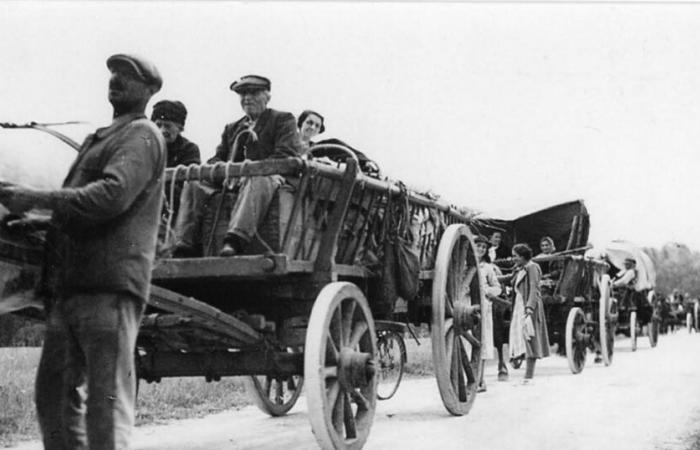The images of war permeate our collective memory. In order for those of the 1939-1945 conflict that moved out of the public, the public good brings together in a new special book over 250 documents and reveals regional photographs rarely seen, if not completely unpublished.
Watch war
In Saône-et-Loire, in Côte-d’Or, in the Rhône, Loire, Haute-Loire, Ain and Jura, amateur or professional photographers offer, by the image, the courageous testimony of this dark period.
Their eyes from yesterday inform us and allow us to remember today, 80 years after the end of the Second World War in Europe.
As early as September 1939, photographers first informed the concern of a daily life that will tip over, military preparations … Then very quickly, war in the distance on the northern and east front became real in our regions with the defeat that is announced.
We come across the first haggard looks of those who were pushed on the roads of the exodus. We also see the concern of those who live under the control of an imposed border, very close to the line of demarcation which cracks the Ain, the Jura or the Saône-et-Loire.
Everywhere from the Côte d’Or in the Loire via the Rhône, the presence of German soldiers is heavily felt. Lyon, in many ways, becomes a strategic city.
250
This is the number of photographs and documents that illustrate the special issue War in pictures.
Resistance is organized
In 1941, the crowd and small children were still brought together to greet the Marshal Pétain but the distrust of the Vichy regime was palpable. The photos testify to this. The struggle is organized as repressions and roundups intensify. The free zone is no longer. The gravity, the horror sometimes, then print photographs.
Among them, there is the innocence of the Jewish children of Izieu in the Ain and that of the hidden children of Chambon-sur-Lignon in Haute-Loire. There is fear in the eyes of soldiers from both sides. There is the courage of young maquisards and resistance fighters. There are also bombings, damage to cities and fights that will lead to Liberation. Smiles slowly reappear in the photos. The war will end and it is necessary to relive. Step by step.
The return to republican legality begins, elections are quickly organized. For the first time, on April 29, 1945, women will vote. They obtained the law a year earlier.
Find the book “War in images” among newspaper merchants and on our shop at a price of 16.90 euros.
Photographing the conflict
The Second World War was documented on a large scale using devices of various formats, by professional photographers or simple amateurs. Sometimes even soldiers.
The pre-war devices are not equipped for dandruff but are with films with films or glass plates 6 x 9 or 9 x 12. This very large diversity of equipment is seen in the formats of the photographs produced.
In the years 1930-1940, reporters-photographers most often had Leica and Rolleiflex. This is often also the case for professional photographers who work for studios of photographers in Chalon-sur-Saône, Lyon, Saint-Étienne or Dijon.
Amateurs use what they have on hand: the device of a parent or theirs. They cannot afford to equip themselves with a leica or a rolleiflex. There are many brands, many formats and the re -use of older devices








